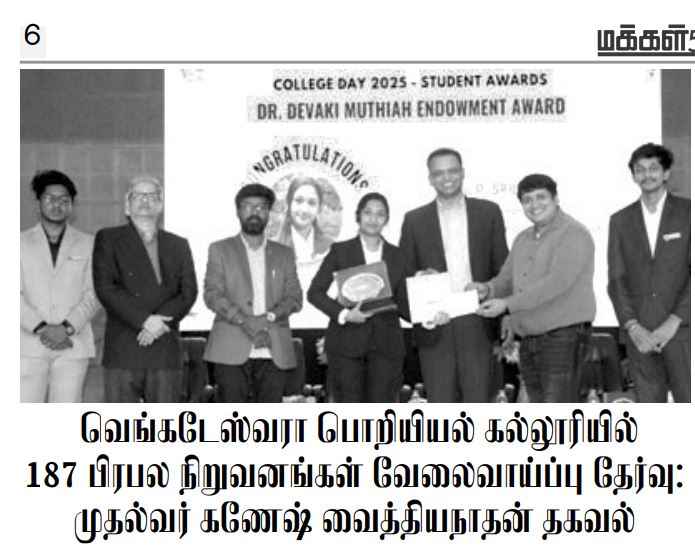Revaluation Circular – 2024 – 2025 EVEN semester of VIII Sem UG and IV sem PG students (Only to those students whose results have been published)
An article has been published in Hindu Tamizh dated 28/12/24 showcasing AICTE sponsored ATAL FDP on “Advanced Semiconductor Devices and AI Chips – Research Opportunities and Challenges” organized by SVCE.







